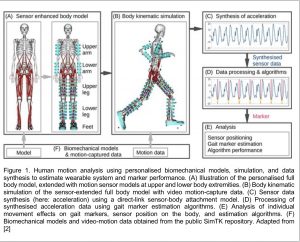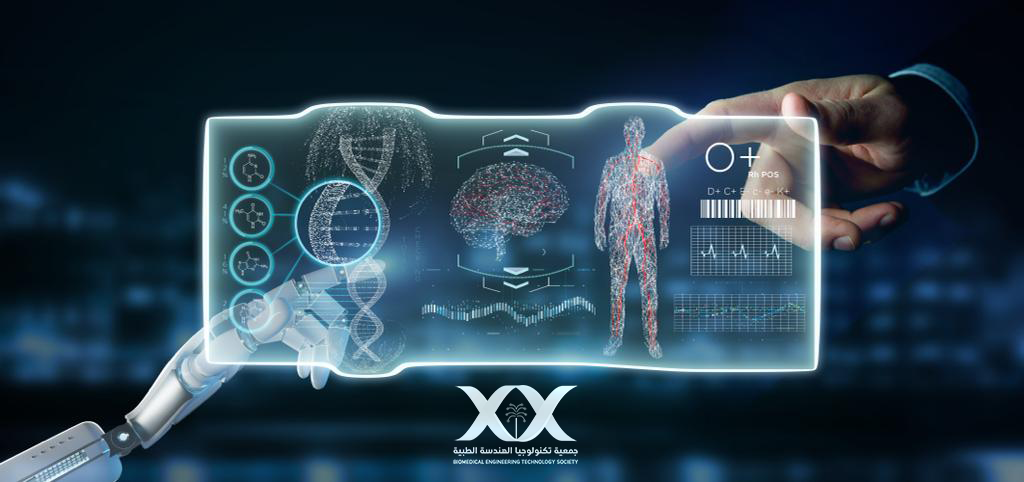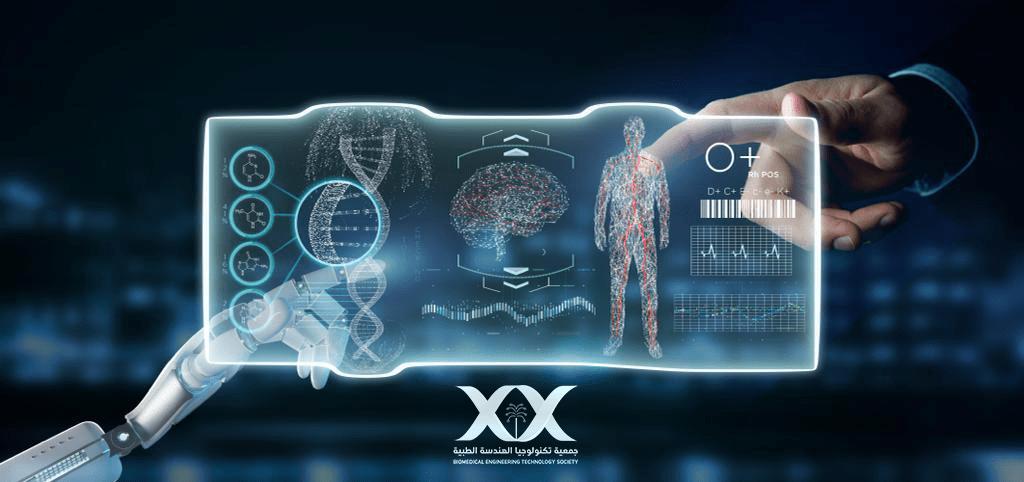Biomechanics and Biomedical Engineering
What is Biomechanics?
Bio means live, mechanic refers to machine, and all together it’s the science of movement of the living body, biomechanics integrates biological characteristics with traditional mechanics [1]. Biomechanics is a subset of biomedical engineering in which mechanics or mechanical engineering principles like mass, heat transfer, fluid mechanics, kinetics, dynamics, mechanics of materials are applied to analyze biological systems of living organism, such as humans, animals, plants and the functional basic units of life, the cells [3]. There are four kye elements that biomechanics focus on to perform biomechanics analysis which is next:
- Dynamics (forward vs inverse): is the study of systems that are in state of accelerated or changing motion.
- Kinematics: is concerned with the analysis of motion (e.g., to determine the forces applied to a joint from the inverse dynamics), (or particles), bodies and systems of bodies without consideration of the masses of objects or the forces that may have caused the motion, including linear and angular changes in velocity over time as well as position, displacement, velocity, and acceleration are studied.
- Statics: is the study of system in a state of equilibrium (at rest or in a constant state of motion)
- Kinetics: is the study of forces that cause, inhibit, facilitate, or modify motion of a body, or result from it (e.g., the reaction of the ground when walking)
However, the following ten principles of biomechanics provide a solid basis for measuring performance, force causes movement, linked segments (joints) , impulse-causing momentum, stretch-shorten cycle (SSC), summing joint forces, continuity of joint forces, impulse direction, rotational motion, manipulating the moment of inertia, and stress causing strain [4].
Why is Biomechanics so important?
It is necessary to performing biomechanics analysis to study biomechanics for human movement, medical devices, sport, hard and soft tissue, cells, and to solve biological problem. Many engineers work in subfields of biomechanics in which plays a significant role in our life, such as, human factors engineering, ergonomics, biomechanics research, clinical biomechanics, and prosthetic research. The following example would explain how important biomechanics field is.
- Starts with understanding how the human body naturally wants to move so we can remove stress and pressure on the bones, joints, muscles, and ligaments to treat pathologies. For example, gait analysis is often used to help guide the physician contemplating surgery for children with cerebral palsy and used to monitor the progression of the disease and the efficacy of the treatment.
- The study of human athletic performance has been revolutionized by motion analysis equipment and software that make it possible to readily analyze complex 3D-movements.
- Developing correct technique to reduce and prevent overuse or chronic injury.
- Understanding of how the nervous system controls the large number of degrees of freedom required to produce smooth, complex movements, or even simple one.
- Understanding of cellular biomechanics and how forces regulate cellular function, this contributes to pharmaceutical developments such as development of pharmacological agents that are biomechanically similar to the target organ and tissue, mainly the creation of substrates that span the known pathophysiological range of cells in which to develop drugs.
- Promoting a quality of life
Application of Biomechanics
In general, biomechanics filed has several applications based on studying of how the system and structure of biological organism react to various forces and external stimuli.
In biomechanics, the principles of engineering mechanics with the fields of biology and physiology are applied to the conception, design, development, and analysis of equipment and systems in biology and medicine [4]. Biomechanics is widely used in orthopedic industry to design orthopedic implants for human joints, dental parts, external fixations, and other medical purposes. Here is some example of biomechanics applications:
- Human musculoskeletal systems
- Neuromusculoskeletal system
- Electromyography(EMG)
- Prosthetics and orthotics in rehabilitation
- Orthopedic industry
- Sport medicine
Our body is constantly subject to forces from within and surrounding the body. Through the study of the interaction of the forces and their effects on the body, the form, function, and motion of our biological body can be studied, and the resulting knowledge can be applied to promoting quality of life. Improved our understanding of normal and pathological situations, mechanics of neuromuscular control, mechanics of blood flow in the microcirculation, mechanics of air flow in the lung, and mechanics of growth and form would contribute to the development of medical diagnostic and treatment procedures. To do that, there are many tools and techniques developed over the years used to apply, measure, and analyze biomechanics in several area mentioned above such as force plates or inertial sensors, motion analysis system as shown in Figure 1, Pressure Distribution Measurements, Visual 3D (c-motion), etc.. These tools help to gain an understanding of the forces acting on the body and how their kinetics and kinematics interact. Biomechanics has provided the means for designing and manufacturing medical equipment, devices, and instruments, assistive technology devices for people with disabilities, and artificial replacements and implants. It has also suggested the means for improving human performance in the workplace and in athletic competition [5].

specific areas of biomechanics as shown below:
- Occupational biomechanics (Human factors engineering)
- Cardiovascular Biomechanics
- Biofluid mechanics
- Rehabilitation
- Kinesiology (kinetics + physiology)
- Forensic biomechanics
- Ergonomy
- Computational biomechanics
- Plant biomechanics
- Allometry
- Implant (medicine), Orthotics & Prosthesis
- Biotribology
- Sport biomechanics (Sport medicine): athletic trainers focus on preventing and immediately treating injuries that occur during sports and on rehabilitating athletes after such injuries. Preventing injury may require such methods as bracing and taping, both of which can affect normal human motion. Biomechanics can help the athletic trainer understand the mechanism of injury (e.g an impact force versus a sudden directional change made by the athlete), and this led to improved athletic performance, reduced injuries, and heightened general wellbeing [5].
- Musculoskeletal and Orthopedic biomechanics includes areas of study like developing betterknee replacement technology, analyzing the impact of car accidents on the human body, and monitoring bone injuries in athletes. This field tends to be multidisciplinary in nature. Research can integrate input from engineers, orthopedic surgeons, physical therapists, and other allied professionals with an interest in how to protect and strengthen the skeleton and its attached tissues [7].
- Molecular, Cellular and Tissue Biomechanics: It emerged from the bioengineering field and uses traditional engineering principles to analyze complex biological systems. Biomechanical phenomena affect nearly every aspect of cellular biology and function, yet the underlying mechanisms of how mechanical forces and biochemical signals interact are not clearly understood. Therefore, understanding how do forces applied to a cell, either directly or through cell–cell or cell–matrix adhesion sites, induce reorganization of the cytoskeleton, thus changing its mechanical properties? And how do the dynamics of cytoskeleton affect cell spreading, rounding, crawling, and adhesion? And how does the interaction between Extracellular Matrix (ECM) and focal adhesion complexes transduce a mechanical signal (force or deformation) into cells? answering these and other questions will be crucial in performing biomechanical study on the structural basis of cellular function and measure the functional tissue activities under biomechanical effect [8].
Summary
The future of Biomechanics looks even brighter than it was years ago especially with the growing of machine learning (ML) algorithms and the benefited of applying it in Biomechanics. It has the potential to significantly increase the objectivity of decision-making in biomechanics, developing medical devices (or prosthetics) and solve complex physiological and biological problems.
References:
- Hatze, H., Letter: The meaning of the term "biomechanics". J Biomech, 1974. 7(2): p. 189-90.
- Derungs, A. and O. Amft, Estimating wearable motion sensor performance from personal biomechanical models and sensor data synthesis. Scientific Reports, 2020. 10(1): p. 11450.
- Knudson, D.V. and D. Knudson, Fundamentals of biomechanics. Vol. 183. 2007: Springer.
- Huston, R.L., Fundamentals of biomechanics. 2013: CRC Press Boca Raton, FL:.
- Kanjilal, K. and S.S. Mondol, A Review of applications and Developments of Biomechanics in Sports. Global Journal of Research In Engineering, 2017.
- Kozak, A., et al., Association between work-related biomechanical risk factors and the occurrence of carpal tunnel syndrome: an overview of systematic reviews and a meta-analysis of current research. BMC Musculoskeletal Disorders, 2015. 16(1): p. 231.
- Imran, A. Modelling and Simulation in Orthopedic Biomechanics—Applications and Limitations. in Computational and Experimental Biomedical Sciences: Methods and Applications. 2015. Cham: Springer International Publishing.
- Bao, G., et al., Molecular Biomechanics: The Molecular Basis of How Forces Regulate Cellular Function.Molecular & cellular biomechanics : MCB, 2010. 3(2): p. 91-105.









